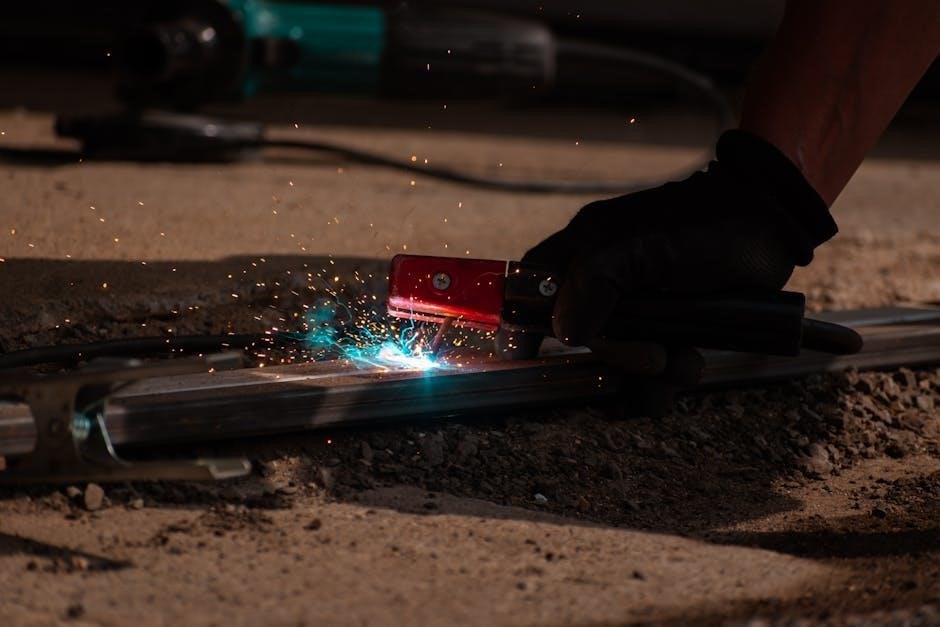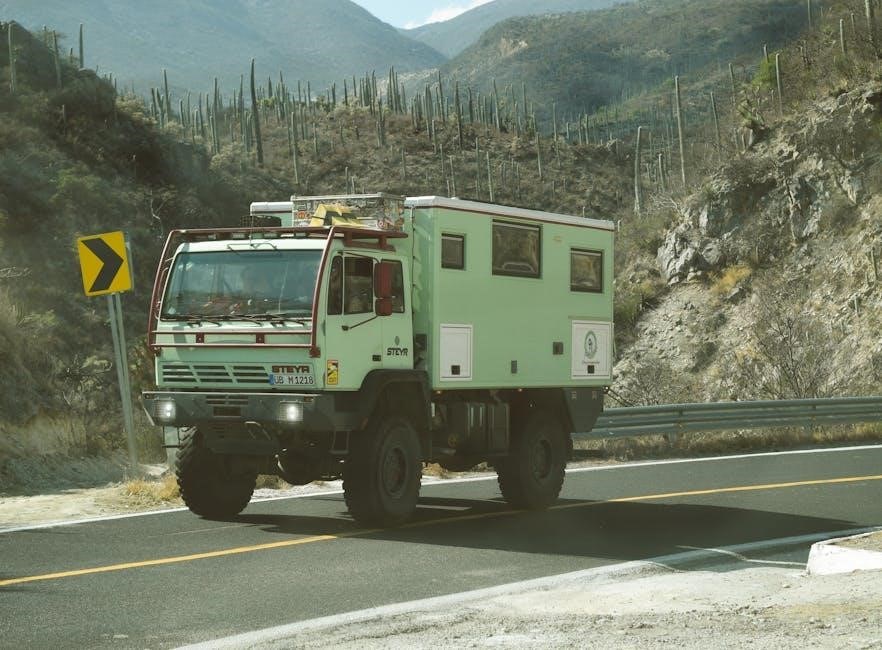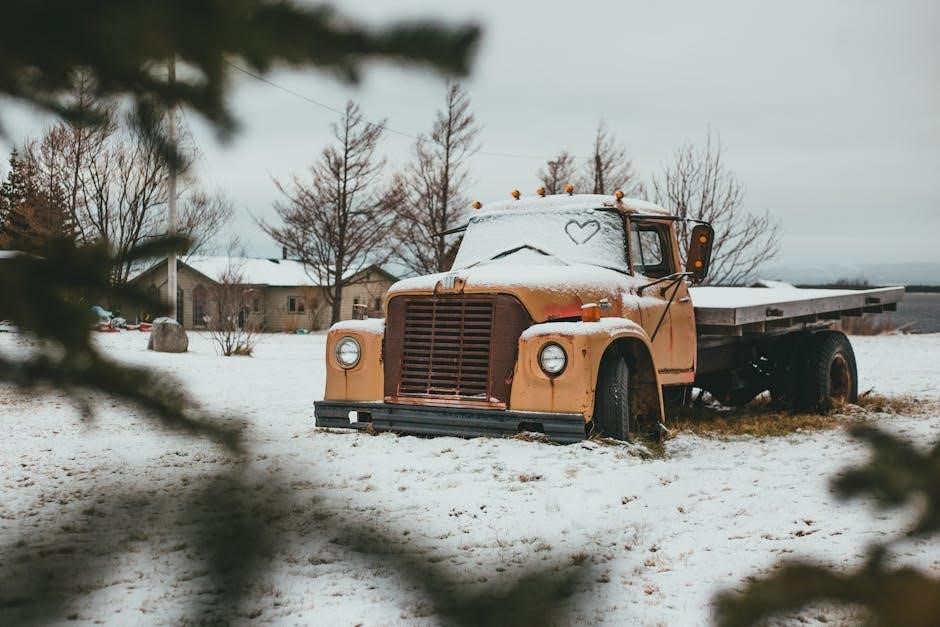
DIY welding truck flatbed projects offer a cost-effective way to customize your vehicle. Detailed PDF drawings provide precise measurements and step-by-step guidance, making fabrication accessible to novices and experts alike.
These plans enhance truck utility, enabling personalized designs for hauling, welding, or storage needs. With clear instructions, enthusiasts can build durable, functional flatbeds tailored to their specific requirements.
Overview of DIY Truck Flatbed Construction
DIY truck flatbed construction involves fabricating a custom bed using detailed PDF drawings. These plans guide enthusiasts through frame assembly, deck installation, and finishing touches, ensuring a durable and functional design tailored to specific needs like hauling or welding equipment.
The process is accessible to both novices and experienced welders, offering cost-effective solutions for enhancing truck utility. By following the step-by-step instructions, individuals can create a flatbed that meets their requirements, whether for work or recreational use.
Importance of Detailed Drawings and Plans
Detailed drawings and plans are crucial for successful DIY truck flatbed projects. They provide precise measurements, ensuring structural integrity and proper fitment. Clear diagrams guide enthusiasts through complex steps, minimizing errors and enhancing safety.
These resources help in visualizing the project, allowing for better material planning and execution. Whether for a utility bed or a welding flatbed, accurate plans are essential for achieving professional-grade results and maximizing the truck’s functionality.

Understanding DIY Weld Truck Flatbed Drawings PDF
DIY weld truck flatbed drawings in PDF format provide detailed, scalable designs for constructing custom flatbeds. They include precise measurements, materials lists, and step-by-step assembly instructions, ensuring clarity and accuracy for builders of all skill levels.
Benefits of Using PDF Drawings for Flatbed Construction
PDF drawings for flatbed construction offer clarity, scalability, and ease of use. They provide detailed measurements, step-by-step instructions, and visual diagrams, ensuring accuracy. Printable and sharable, these files allow builders to plan effectively. PDFs are ideal for DIY projects, as they minimize errors and ensure structural integrity. Their digital format makes them easily accessible and adaptable to various skill levels, fostering successful flatbed builds.
Key Features of DIY Flatbed Truck Plans
DIY flatbed truck plans typically include detailed PDF drawings, measurements, and material lists. They often feature customizable designs, catering to various truck models and uses. These plans emphasize structural integrity, load capacity, and durability. Many include step-by-step instructions, making them suitable for both novice and experienced welders. Additional features may involve options for storage compartments, lighting systems, and customizable finishes, ensuring a tailored solution for specific needs and preferences.

Materials and Tools Required for Welding a Flatbed
Essential materials include steel beams, aluminum sheets, and bolts. Tools like MIG welders, grinders, and measuring tools are crucial for precise fabrication.
Additional items such as welding wire, safety gear, and paint for finishing are also necessary to ensure durability and a professional-looking result.
Essential Materials for Building a Flatbed
Steel beams, aluminum sheets, and heavy-duty bolts are fundamental for constructing a durable flatbed. High-strength steel tubing is ideal for the frame, while aluminum or wood planks can be used for the bed surface. Welding wire, such as flux-cored or solid wire, is essential for strong joints. Additionally, rust-resistant coatings and paints are recommended to protect the metal from corrosion. U-bolts, tie-downs, and fasteners ensure secure attachments. Ensure all materials align with your DIY flatbed truck plans PDF for optimal results and safety.
Welding Tools and Equipment Needed
To successfully build a DIY truck flatbed, essential welding tools include a MIG welder for versatility and a TIG welder for precision on thinner materials. A wire wheel and angle grinder are crucial for preparing metal surfaces. Safety gear like a welding helmet, gloves, and safety glasses is non-negotiable. C-clamps and spring clamps will help hold pieces in place, while a welding table or sturdy workbench is ideal. Measuring tools such as a tape measure, square, and level ensure accuracy. Cutting tools like a plasma cutter or oxy-acetylene torch are necessary, along with bolt cutters. High-strength bolts, nuts, and washers are vital for assembly. A drill press, impact wrench, and sockets facilitate precise drilling and tightening. Grinding tools like a flap wheel and sanding discs smooth edges. A heat-resistant blanket protects your workspace, and proper ventilation with a respirator is essential for safety. Consumables like welding wire and shielding gas are also required. Having these tools ensures a well-equipped setup for your flatbed project.

Design Considerations for a Custom Flatbed
When designing a custom flatbed, consider load capacity, structural integrity, and intended use. Ensure proper weight distribution and select materials that balance durability and weight. Plan for storage compartments, tie-down points, and lighting systems to enhance functionality. Always follow safety standards and measure accurately to ensure compatibility with your truck’s specifications. A well-designed flatbed maximizes utility while maintaining aesthetic appeal, making it a practical and personalized addition to your vehicle.
Measuring and Planning the Flatbed Layout
Accurate measurements and detailed planning are critical for a successful flatbed project. Start by measuring your truck’s bed dimensions and axle placement to ensure proper fitment. Use a tape measure to record the length, width, and height of the area where the flatbed will be installed. Refer to your DIY PDF drawings for precise layouts and dimensions. Consider the weight distribution and how the flatbed will be used to determine the optimal placement of supports and reinforcements. Plan for tie-down points and storage compartments to maximize functionality. Ensure all measurements align with your truck’s specifications for a seamless installation. Proper planning ensures structural integrity and a professional finish.
Load Capacity and Structural Integrity
Ensuring your flatbed can handle the intended load is crucial for safety and durability. Calculate your truck’s axle rating and the maximum weight it can carry. Use high-strength materials like steel for the frame to maintain structural integrity. Proper welding techniques are essential to avoid weak points that could fail under heavy loads. Consider the distribution of weight across the flatbed to prevent uneven stress. Reinforce critical areas, such as the corners and support beams, to enhance stability. Always follow the specifications outlined in your DIY PDF drawings to guarantee reliability and safety.

Safety Tips for Welding and Building a Flatbed
Always wear protective gear, including a welding helmet, gloves, and safety glasses. Ensure proper ventilation to avoid inhaling fumes. Keep a fire extinguisher nearby and maintain a clean workspace to prevent accidents. Follow all equipment manufacturer guidelines and safety protocols to ensure a secure working environment.
General Welding Safety Precautions
When welding, always wear a helmet, gloves, and safety glasses to protect against sparks and UV radiation. Ensure loose clothing and long hair are tied back. Keep the workspace well-ventilated to avoid inhaling fumes. Never weld near flammable materials or in confined spaces without proper airflow. Use fire-resistant curtains or screens to contain sparks. Keep a fire extinguisher nearby and ensure it’s easily accessible. Follow all equipment manufacturer guidelines and regularly inspect welding tools for damage. Proper preparation and adherence to safety protocols are crucial to preventing accidents and ensuring a safe working environment.
Protective Gear and Workspace Preparation
Always wear a welding helmet, safety glasses, and heat-resistant gloves to protect against sparks and heat. Ensure the workspace is clean, free from flammable materials, and well-ventilated. Use a fire-resistant curtain or screen to contain sparks. Keep a fire extinguisher and first aid kit nearby. Properly secure loose clothing and tie back long hair to avoid accidents. Prepare the truck frame by cleaning it with a wire wheel or grinder to remove rust and ensure a clean welding surface. A safe and organized workspace is essential for successful flatbed construction.

Step-by-Step Construction Process
Fabricate the frame and subframe using detailed PDF drawings. Assemble the flatbed, ensuring precise welding joints for strength. Finish with coatings to protect against corrosion and wear.
Fabricating the Frame and Subframe
Start by cutting and assembling the frame using steel beams, ensuring alignment with PDF drawing specifications. Weld the subframe to the truck chassis for stability. Use a MIG welder for strong, clean joints. Sand and deburr all edges for smooth finishes. Apply primer to protect against rust. Ensure frame durability by following detailed measurements from the drawings. Proper welding techniques are crucial for structural integrity. Double-check alignment before finalizing welds to avoid costly rework.
Assembling the Flatbed and Welding Joints
Finishing and Coating the Flatbed
After assembling the flatbed, sand all welded joints to smooth rough edges. Apply a rust-inhibiting primer, followed by a durable coat of paint or powder coating. Ensure the finish aligns with your truck’s color scheme for a professional look. Seal any gaps or bolts with silicone to prevent water intrusion. Allow the coating to cure completely before use. Refer to your PDF drawings for specific finishing recommendations to maintain structural integrity and long-lasting protection against the elements.

Customizing Your Flatbed
Add functional and aesthetic upgrades like storage compartments, tie-down points, or lighting packages. Use PDF plans to guide modifications, ensuring seamless integration with your truck’s design and purpose.
Adding Storage Compartments and Accessories
Enhance your flatbed’s functionality by incorporating storage compartments, tie-down points, and organizational systems. PDF plans often include designs for custom compartments to maximize space and protect equipment.
Install lighting packages, fender kits, or cargo management systems to tailor the flatbed to your needs. These additions improve utility and ensure your truck remains versatile for various tasks and projects.
Installing Lighting and Electrical Systems
Lighting and electrical systems are crucial for functionality and safety. PDF drawings provide detailed instructions for installing LED lights, wiring, and electrical components, ensuring proper integration into your flatbed design.
These systems enhance visibility and utility, especially for nighttime operations. Customizable lighting packages and wiring diagrams help you create a well-lit, functional flatbed tailored to your specific needs and preferences.

Final Inspection and Testing
Conduct a thorough inspection of weld quality and structural integrity. Test the flatbed under load to ensure safety and durability, verifying all components function as intended.
Checking Weld Quality and Structural Integrity
Inspect each weld for cracks, porosity, or incomplete penetration. Use a wire brush and grinder to clean and verify the integrity of all joints. Ensure the frame is rigid and evenly supported.
Test the flatbed under controlled loads to confirm its strength. Check for any signs of bending or stress, especially at critical connection points. This step ensures safety and long-term reliability.
Address any defects promptly to maintain structural integrity. A solid, well-welded flatbed guarantees durability and performance for years of heavy use.
Testing the Flatbed Under Load
Testing the flatbed under load is crucial to ensure it can handle its maximum capacity safely. Gradually apply weight to assess structural strength and identify potential weaknesses.
Use tools like a torque wrench or pressure gauge to monitor stress points. Repeat the test with different load configurations to validate reliability and performance under various conditions.
If any issues arise, such as bending or instability, make necessary adjustments to the frame or supports. This ensures the flatbed remains durable and functional for long-term use.

Resources for DIY Flatbed Truck Plans
Discover detailed DIY flatbed truck plans and drawings on platforms like Pinterest, Etsy, and Highway Products Inc. for a successful build.
Recommended Websites for PDF Drawings
For reliable DIY flatbed truck plans, visit Pinterest, Etsy, and Highway Products Inc.. These platforms offer detailed PDF drawings and step-by-step guides. Etsy provides affordable digital downloads, while Pinterest showcases creative designs and inspiration. Highway Products Inc. specializes in custom flatbed solutions. These resources ensure you have accurate measurements and instructions to build a sturdy, functional flatbed tailored to your needs. Explore these sites to find the perfect plan for your project.
Communities and Forums for DIY Welding Projects
Join online communities like Reddit’s r/DIY and r/Welding for expert advice and shared experiences. YouTube channels dedicated to truck modifications and welding tutorials offer practical insights. Facebook groups focused on truck builds and custom fabrication provide valuable resources and support. These platforms allow you to connect with experienced builders, ask questions, and gain confidence in your project. They also offer inspiration and troubleshooting tips to help you overcome challenges during your flatbed construction journey.

Troubleshooting Common Issues
Identify and fix welding mistakes, address measurement errors, and ensure structural integrity. Properly align frames and verify load capacity to avoid failures during use.
Identifying and Fixing Welding Mistakes
Common welding errors include poor penetration, porosity, and misalignment. Inspect joints for gaps or weak spots. Use a wire brush or grinder to clean rusty areas before welding.
- Check for uneven welds and reinforce as needed.
- Ensure proper alignment using clamps or fixtures.
- Refer to PDF drawings for correct techniques and measurements.
Addressing these issues early prevents structural weaknesses and ensures a durable flatbed. Always test weld quality and reinforce joints for maximum strength and reliability.
Addressing Measurement and Fitment Errors
Accurate measurements are critical to ensure proper fitment of the flatbed components. Double-check all dimensions against your PDF plans to avoid costly mistakes.
- Use calipers or tape measures for precise readings.
- Mark frames and components clearly before cutting or drilling.
- If errors occur, grind or shim uneven surfaces for alignment.
Fixing fitment issues early prevents structural weaknesses and ensures a seamless build. Always verify alignment before welding to maintain the integrity of your flatbed design.
Building a DIY welded flatbed is a rewarding project that enhances your truck’s functionality. With detailed PDF plans, you can achieve professional results at a fraction of the cost.
Whether for work or hobbies, a custom flatbed offers versatility and durability. Start your project today and enjoy the satisfaction of creating something tailored to your needs!
Final Thoughts on Building a DIY Welded Flatbed
Completing a DIY welded flatbed project is a testament to your skill and dedication. The sense of accomplishment from creating a functional, customized flatbed is unparalleled.
With detailed PDF plans as your guide, you’ve transformed raw materials into a durable, versatile tool tailored to your needs. Whether for work or leisure, your flatbed will serve as a reliable companion.
Remember, DIY projects foster creativity and problem-solving. Take pride in your handmade flatbed, and don’t hesitate to customize it further as your needs evolve over time.
Start your next project with confidence, knowing you have the skills to bring your ideas to life. Happy welding!
Encouragement for Beginners to Start Their Project
Starting a DIY welded flatbed project can seem daunting, but it’s a rewarding journey. Begin by gathering detailed PDF plans and essential tools to guide you through the process.
Remember, every skilled welder began with their first project. Don’t be afraid to learn as you go—each step builds confidence and skill. Join online communities for support and inspiration.
Take it one piece at a time, and celebrate small victories. The sense of accomplishment from creating something functional and personalized is invaluable. Dive in, stay patient, and enjoy the creative process!